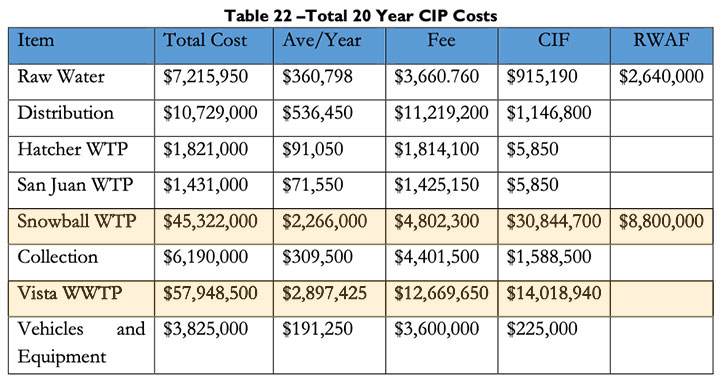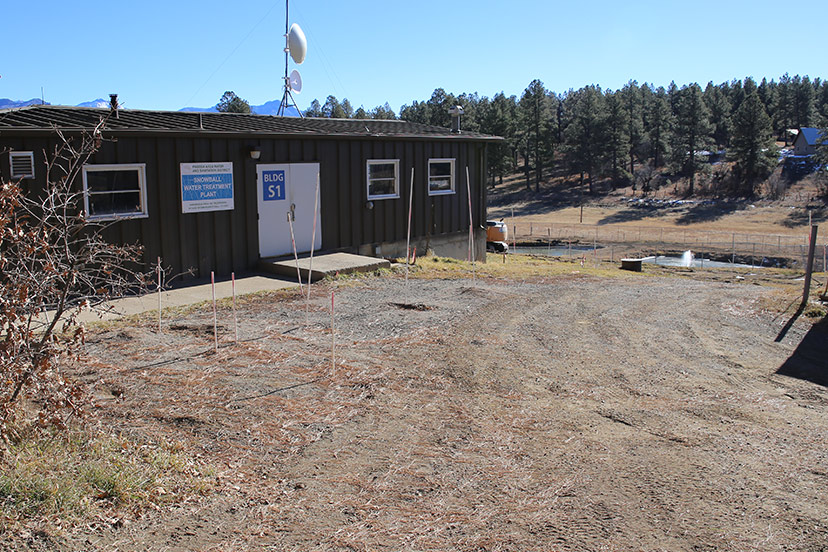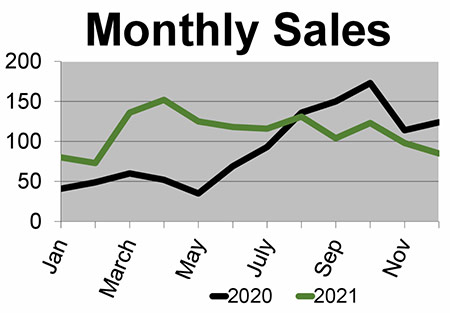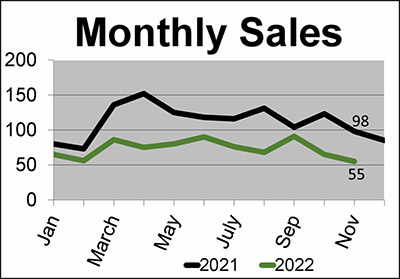PHOTO: The Snowball Water Treatment Plant, 2022.
Nestled under the San Juan Mountains amid some of the deepest, cleanest snowpack in Colorado, and celebrated for hot springs, an ice festival and a drinking source burbling naturally through a filter of ancient lava, the city of Ouray will soon have another distinction it never expected:
Some of the highest-priced drinking water in the state…
That’s according to a February 2 article in The Colorado Sun, written by reporter Michael Booth.
The Colorado Department of Public Health and Environment (CDPHE) determined in 2021 that Ouray’s pristine aquifer was not quite as pristine as the federal government requires. Detailed testing revealed ‘total coliforms’ that exceeded the state’s acceptable levels. Coliform bacteria are present in almost every person’s intestines, and according to the Environmental Protection Agency (EPA):
Total coliforms are a group of related bacteria that are (with few exceptions) not harmful to humans. A variety of bacteria, parasites, and viruses, known as pathogens, can potentially cause health problems if humans ingest them. EPA considers total coliforms a useful indicator of other pathogens for drinking water. Total coliforms are used to determine the adequacy of water treatment and the integrity of the distribution system.
The City of Ouray now needs a new, roughly $12 million treatment plant, to meet Clean Water Act standards. With a town population of 1,000 residents, that expense would be equivalent to about $12,000 per man, woman and child, or about $30,000 for an average household.
The City has been working on the new treatment plant for the past 18 months… but not fast enough for CDPHE. On January 10, the City received a violation letter for “failure to provide adequate treatment of a public water supply”… listing the penalties as “ongoing” with a range of $975 to $1,463.
In Mr. Booth’s Colorado Sun article, Ouray’s mayor Ethan Funk is quoted.
“So at the end of the day, Ouray is going to have one of the highest water rates in the state. I’ve seen charts. I don’t think it’s quite the highest, but it’s pretty much on the shortlist…”
Total coliforms are not an issue here in Pagosa Springs, because all our municipal drinking water runs through one of the district’s three treatment plants.
But according to the numbers I’ve been reviewing, Pagosa Springs has it’s own water issues.
The Pagosa Area Water and Sanitation District (PAWSD) board of directors will meet later this week… on Thursday, February 9 at 5pm at the PAWSD offices, 100 Lyn Avenue. The public is invited to attend Board Meetings and public comment is welcomed.
Here’s the Zoom link: https://us02web.zoom.us/j/84690531627?pwd=SVY3YTlCdEgyc1VNNGorNGFtNUcxUT09
Disclosure: I currently serve on the PAWSD Board of Directors, but this editorial series reflects only my personal opinions, and not necessarily the opinions of the PAWSD Board as a whole.
Some of the conversations might touch on the cost of drinking water treatment, and on the cost of wastewater treatment. PAWSD handles both of those functions for its ratepayers.
Businesses come and go in Pagosa Springs. I would estimate that maybe 60% of the businesses that were in operation when I moved to Pagosa 30 years ago have closed their doors. Many of the rest have been sold to new owners, and in many cases, changed their names. This pattern of change applies to both for-profit and non-profit businesses.
Governments rarely close their doors. Once a tax-funded government entity is created, it seems to become practically immortal. The commissioners, and board members, and staff come and go, but the government remains, regardless of whatever economic cycles a community might go through.
As mentioned earlier in this editorial series, PAWSD has two relatively expensive projects listed in its 20-year Capital Improvement Plan, which is on the agenda for Thursday. You can download the 33-page Plan here.
The building housing the Snowball Treatment Plant on Snowball Road is reportedly in bad shape and beyond repair, so the PAWSD staff has been working on plans to build a totally new plant at that same location, at some point in the next couple of years.
The other large pending project is a series of upgrades to the Vista Wastewater Treatment Plant, required by CDPHE, presumably to be completed within the next 10 years.
In the Plan, the Snowball plant is priced at $45.3 million. The Vista plant is priced at $57.9 million.

If we add those two projects together, we get a total of about $105 million.
PAWSD estimates its future customer growth at about 2% per year, which is likely on the high side. (More about that in a moment.) If PAWSD grows at 2% per year, its customer base will grow from about 10,500 residents to about 12,800 residents over the next ten years. (Presumably the number of commercial business accounts might grow at about the same rate?)
Spread $105 million over a population of 12,800… and you get the equivalent of about $8,200 per person, or about $18,000 per average household. Not as bad is what the folks in Ouray are facing, but still not wonderful.
How fast is our Archuleta County population growing? Is 2% per year a reasonable number?
In the 12 years since 2010, the population has grown from about 12,800 to about 13,750 (US Census). Call it, an addition of 1,000 people.
That averages out to less than 1% per year.
Some people have been saying that Pagosa Springs is now growing at a fabulous rate, since the start of COVID.
But maybe not.
In January 2022, local realtor Lee Riley provided a chart showing the real estate sales during the preceding year.
What we see here is the ‘COVID Rush’. During the second half of 2020, and all during 2021, Pagosa realtors were recording record sales, generally between 100 and 150 per month. Prices were also at record levels.
Here’s Mr. Riley’s chart for 2022. Obviously, the ‘COVID Rush’ has greatly diminished. Sales didn’t hit 100 sales in any month of the year, and in November had dropped to 55 sales — roughly half of the previous November.
Is the real estate roller coaster ride over?
And the water treatment roller coaster just beginning?



